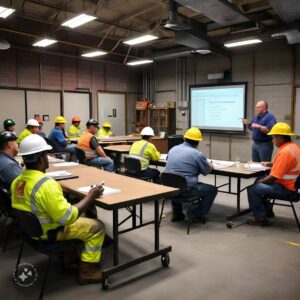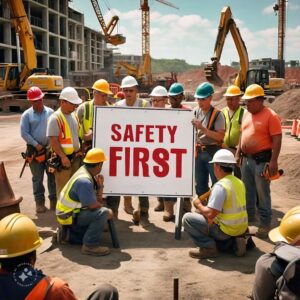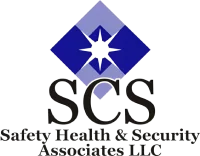Embracing Safety in the New Year: A Fresh Start for Construction and Industrial Businesses
Setting the Stage for a Safer Year Ahead
As the calendar turns to a new year, construction and industrial businesses have a unique opportunity to reflect on their safety practices and set new goals for improvement. Whether it is construction safety or industrial safety, safety isn’t just a buzzword; it’s a critical component of success in these high-risk industries. By prioritizing safety, companies can protect their most valuable asset—their employees—while also enhancing productivity and reducing costs associated with accidents and injuries.
In this blog post, we’ll explore how construction and industrial businesses can leverage the new year to refocus on safety, set meaningful safety goals, and implement strategies to create a safer work environment for everyone involved.
The Importance of Safety in Construction and Industrial Settings
Understanding the Risks
Construction sites and industrial facilities are inherently hazardous environments. From heavy machinery to heights, from electrical hazards to chemical exposures, workers face potential dangers daily. According to the Occupational Safety and Health Administration (OSHA), the construction industry accounted for about 20% of worker fatalities in private industry in recent years. Similarly, the industrial sector faces its own set of challenges, with risks ranging from equipment malfunctions to exposure to harmful substances.
The Impact of Safety on Business
- Reduced accidents and injuries
- Lower workers’ compensation costs
- Improved employee morale and retention
- Enhanced company reputation
- Increased productivity and efficiency
When businesses prioritize safety, they create a positive ripple effect that extends beyond just preventing accidents. A strong safety culture can lead to a more engaged workforce, better quality work, and even improved financial performance.
New Year, New Safety Goals: Where to Start
Assessing Your Current Safety Program
Before setting new safety goals, it’s crucial to evaluate your existing safety practices. This assessment should be comprehensive and honest, involving input from all levels of the organization.
- Review incident reports and near-misses from the previous year
- Analyze trends in safety violations or concerns
- Gather feedback from employees on safety issues
- Evaluate the effectiveness of current safety training programs
- Assess compliance with industry regulations and standards
If you are thinking, “How can I assess a safety program I don’t have?” This is where SCS Safety Health & Security Associates can help. We develop a Safety Program which is tailored for your company.
Setting SMART Safety Goals
When it comes to improving safety, setting specific, measurable, achievable, relevant, and time-bound (SMART) goals is key. Here are some examples of SMART safety goals for construction and industrial businesses:
- Reduce reportable incidents by 25% over the next 12 months
- Achieve 100% completion of monthly safety training for all employees by Q2
- Implement a new hazard reporting system and increase hazard reports by 50% in the first six months
- Conduct weekly safety walk-throughs on all job sites, with at least 90% compliance throughout the year
- Decrease the average time to address identified safety issues from 14 days to 7 days by the end of Q3
Involving Employees in Goal Setting
Safety is everyone’s responsibility, and involving employees in the goal-setting process can lead to greater buy-in and more effective outcomes. Consider organizing safety committees or focus groups where workers can share their concerns and ideas for improvement.
Strategies for Improving Safety in the New Year
Enhancing Safety Training and Education

One of the most effective ways to improve safety is through comprehensive and ongoing training. In the new year, consider:
- Updating training materials to address new regulations or identified risks
- Implementing a mix of in-person and online training options for greater flexibility
- Incorporating hands-on, scenario-based training to improve retention and application
- Developing a mentorship program where experienced workers can guide newer employees on safety practices
Training Requirements in OSHA Standards
Leveraging Technology for Safety Management
Technology can play a crucial role in enhancing safety efforts. Some technological solutions to consider include:
- Safety management software for tracking incidents, near-misses, and corrective actions
- Mobile apps for real-time hazard reporting and safety checklists
- Wearable devices that can detect falls or monitor exposure to harmful substances
- Virtual reality simulations for high-risk training scenarios
Promoting a https://scssafetyandhealth.com/safety-consulting-services/Positive Safety Culture
A strong safety culture is the foundation of any successful safety program. To foster this culture:
- Lead by example, with management visibly prioritizing and participating in safety initiatives
- Recognize and reward safe behaviors and proactive safety suggestions
- Encourage open communication about safety concerns without fear of reprisal
- Regularly share safety success stories and lessons learned from incidents
Regular Safety Audits and Inspections
Implementing a robust system of safety audits and inspections can help identify and address potential hazards before they lead to accidents. Consider:
- Developing a schedule for regular safety walk-throughs and inspections
- Creating detailed checklists for different areas or types of equipment
- Involving employees from different departments in the inspection process
- Following up promptly on any issues identified during audits

Overcoming Challenges to Safety Improvement
Addressing Common Obstacles
Improving safety often comes with challenges. Some common obstacles include:
- Resistance to change from long-time employees
- Budget constraints for new safety equipment or training
- Time pressures that may lead to cutting corners on safety procedures
- Language barriers in diverse workforces
To overcome these challenges:
- Communicate the benefits of safety improvements clearly and consistently
- Prioritize safety investments and look for cost-effective solutions
- Emphasize that safety procedures are not optional, regardless of deadlines
- Provide multilingual safety materials and training when necessary
Maintaining Momentum Throughout the Year
It’s common for enthusiasm for new initiatives to wane as the year progresses. To maintain focus on safety goals:
- Break larger goals into smaller, manageable milestones
- Regularly review and communicate progress towards safety objectives
- Celebrate achievements and milestones along the way
- Adjust strategies as needed based on ongoing feedback and results
Measuring Success and Continuous Improvement
Key Performance Indicators for Safety
To track progress and measure the success of your safety initiatives, consider monitoring these key performance indicators (KPIs):
- Total recordable incident rate (TRIR)
- Days away, restricted or transferred (DART) rate
- Near-miss frequency rate
- Safety training completion rates
- Time to closure for reported hazards or safety concerns
Learning from Successes and Setbacks
Every incident, whether it results in an injury or not, provides an opportunity for learning and improvement. Implement a robust incident investigation process that:
- Focuses on identifying root causes rather than assigning blame
- Involves workers in the investigation and solution-finding process
- Results in clear action items to prevent similar incidents in the future
- Shares lessons learned across the organization
Conclusion: A Commitment to Safety in the New Year
As we embark on a new year, construction and industrial businesses have a prime opportunity to renew their commitment to safety. By setting clear goals, implementing effective strategies, and fostering a culture where safety is valued at all levels, companies can create a work environment that protects employees and contributes to overall business success.
Remember, improving safety is an ongoing journey, not a destination. It requires constant vigilance, adaptability, and a willingness to learn and improve. As you move forward with your safety initiatives in the new year, keep the following points in mind:
- Safety is a shared responsibility that requires engagement from everyone in the organization
- Consistent communication and reinforcement of safety practices are key to lasting change
- Investing in safety is an investment in your workforce and your company’s future
- Celebrating safety successes, both big and small, helps maintain motivation and focus

By making safety a top priority in the new year, construction and industrial businesses can create a positive ripple effect that extends far beyond the workplace, contributing to a safer, more productive industry as a whole.
SCS Safety Health and Security Associates Can Provide Assistance With Safety
At SCS Safety Health and Security Associates LLC, we specialize in crafting customized safety solutions for all types of industries: Construction, manufacturing, industrial, healthcare, education to name a few. Whether it is developing safety programs, conducting site safety inspections, providing training, safety meetings, along with teaching First Aid | CPR AED, OSHA 10 & 30 Hour courses (Construction and General Industry) development of emergency action plans and Active Shooter Training (AVERT) conducting job safety analysis’ proving investigations, or assisting with OSHA investigations / inspections, our strength is in identifying the distinct safety challenges that companies encounter and supplying practical, efficient solutions. With an unwavering commitment to safety, our team of experts guarantees that your company’s endeavors are executed with the utmost care and adherence to regulations. You can rely on SCS Safety Health and Security Associates LLC, to provide tailored safety services that focus on safeguarding your workforce and company.
Recent Posts
- National CPR & AED Awareness Week 2025 June 2, 2025
- Cultivating a Thriving Safety Culture: A Roadmap for Your Company May 17, 2025
- Embracing Safety in the New Year: A Fresh Start for Construction and Industrial Businesses December 30, 2024
- Emergency Response Plans November 27, 2024
- Safety Consultants September 9, 2024
Categories
- CPR AED (2)
- Forklift Safety (1)
- Safety (4)
- Uncategorized (1)
